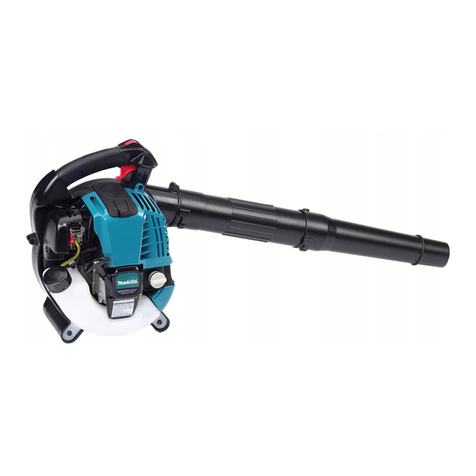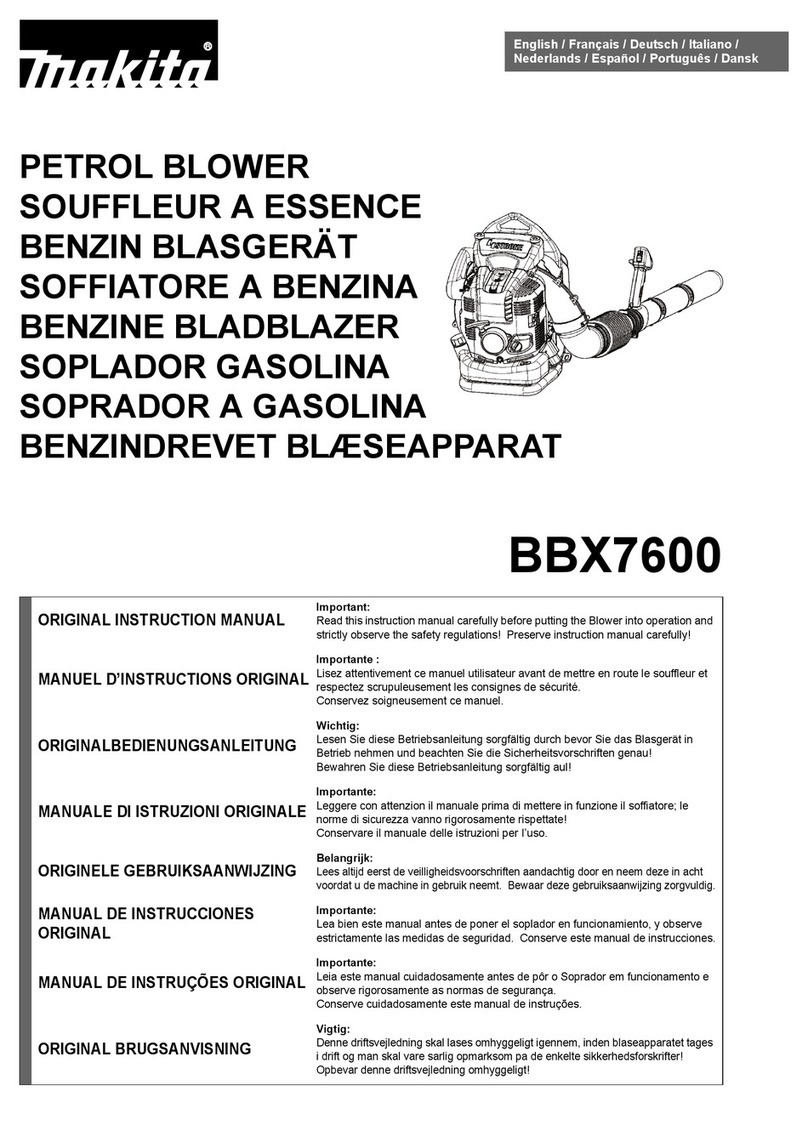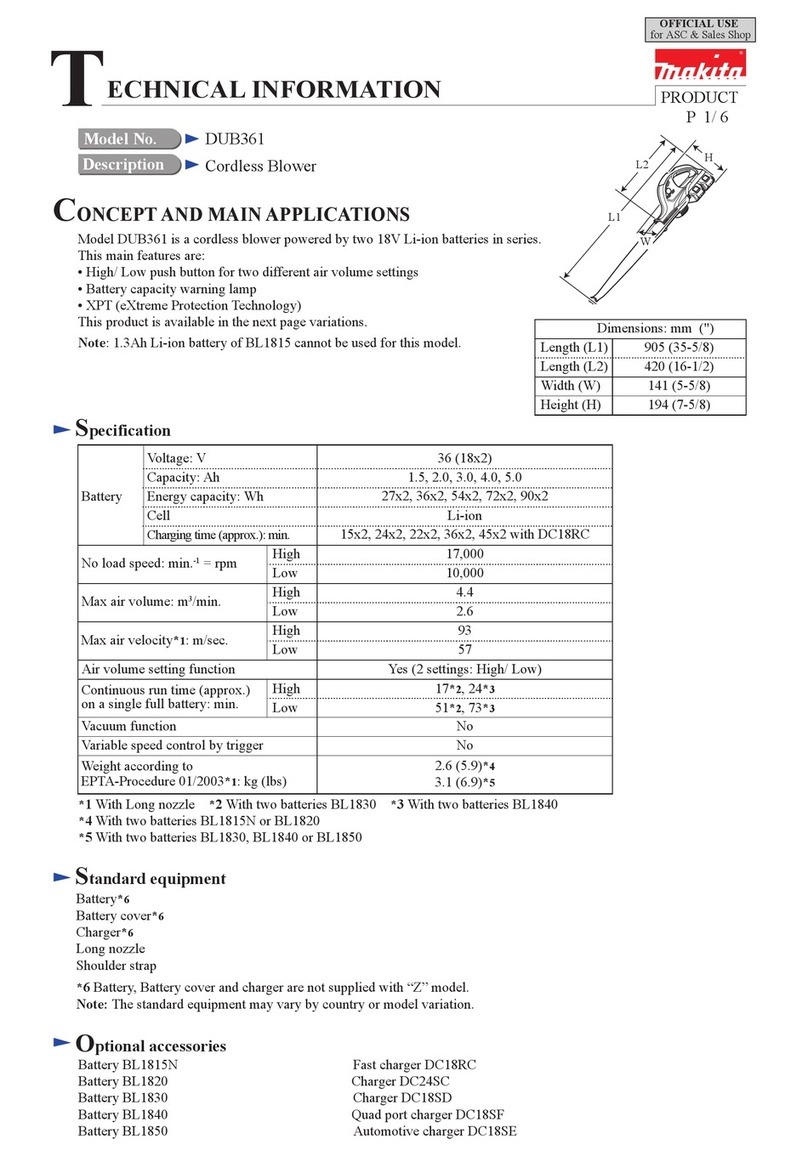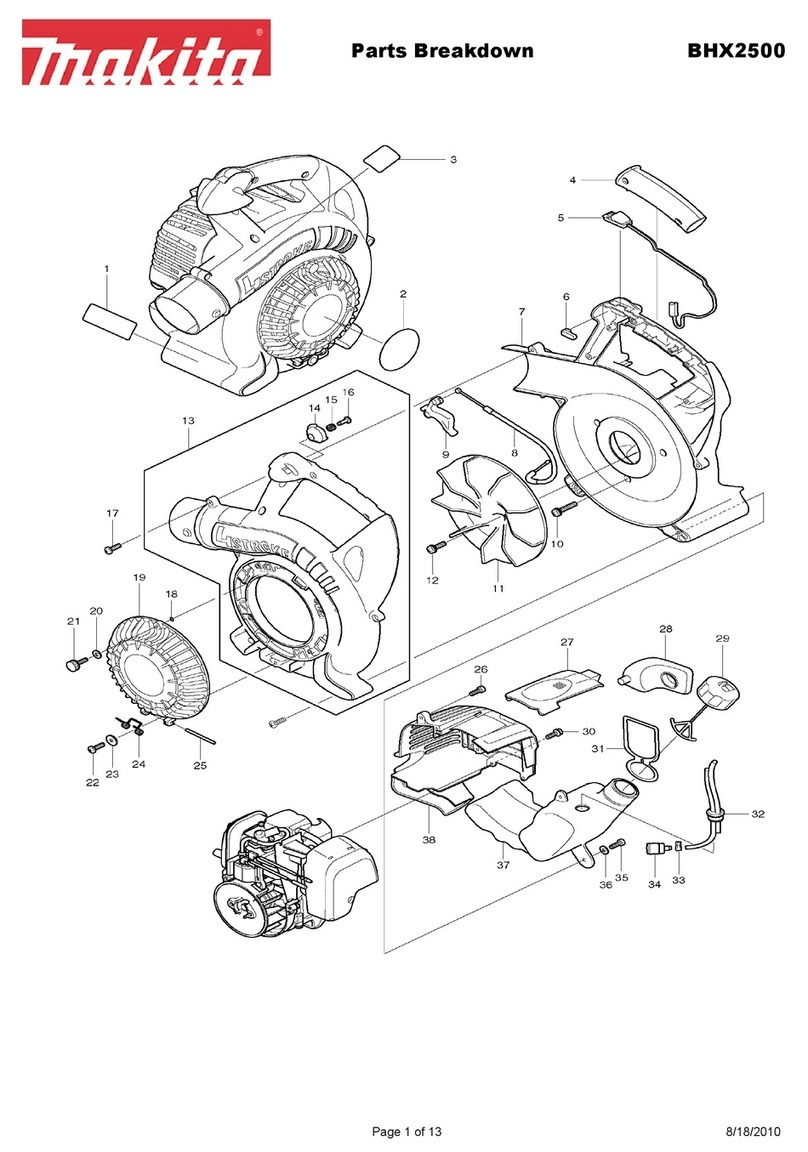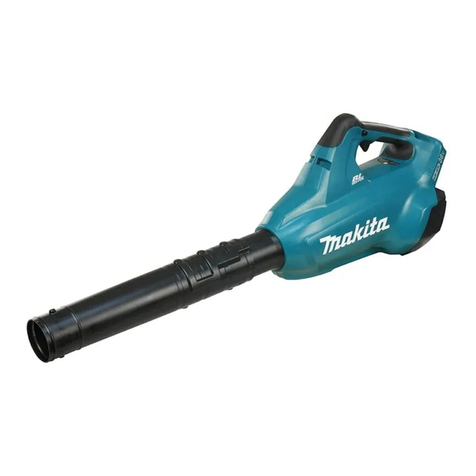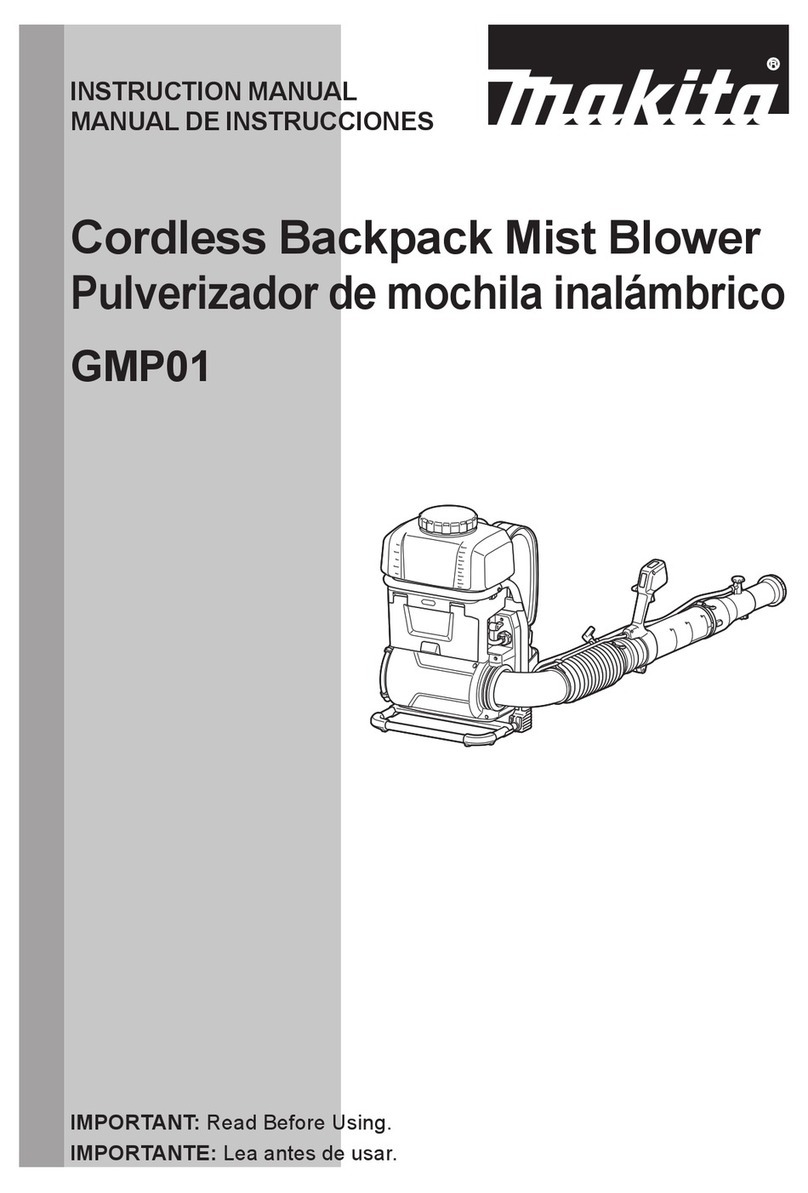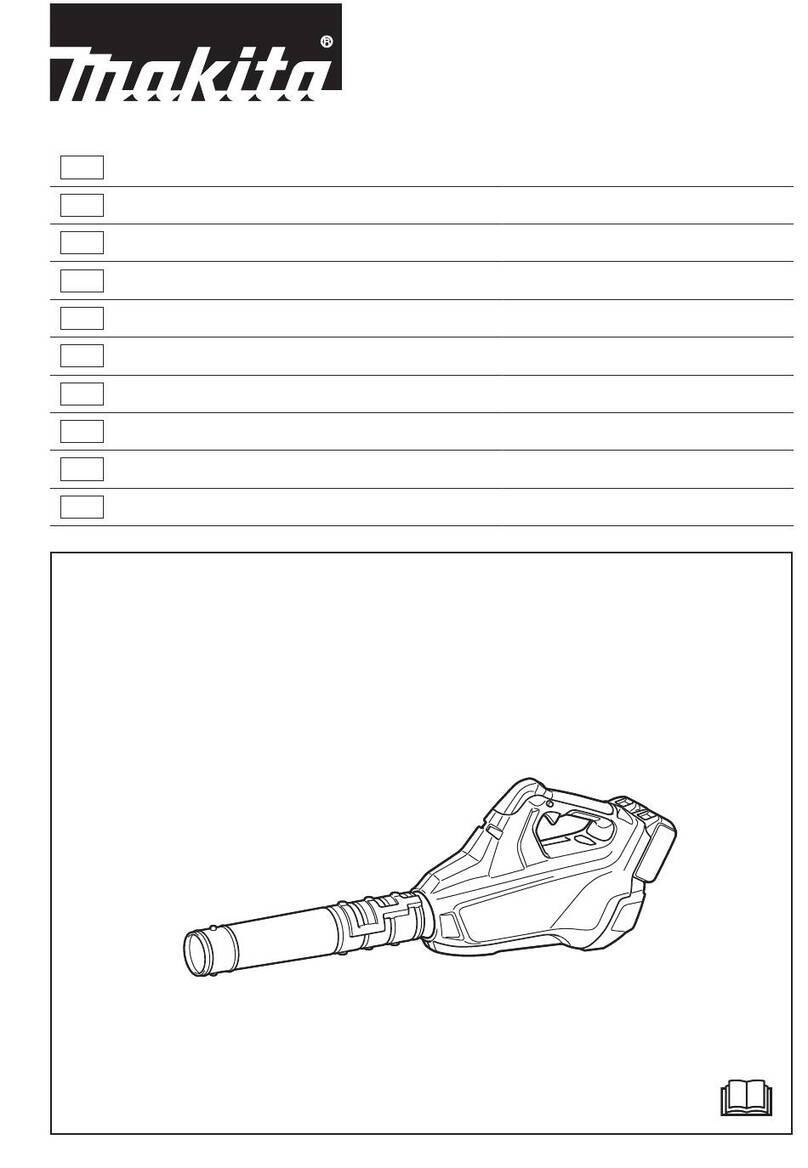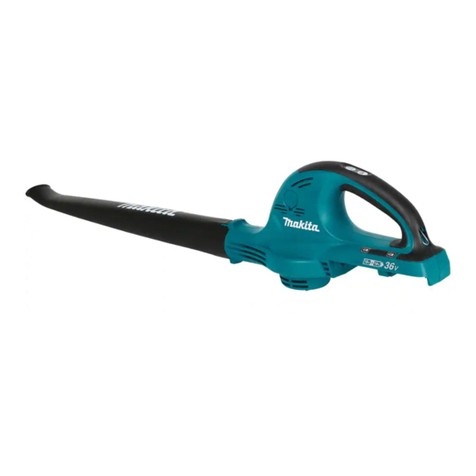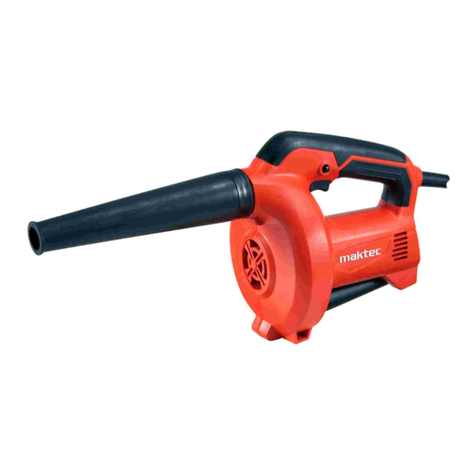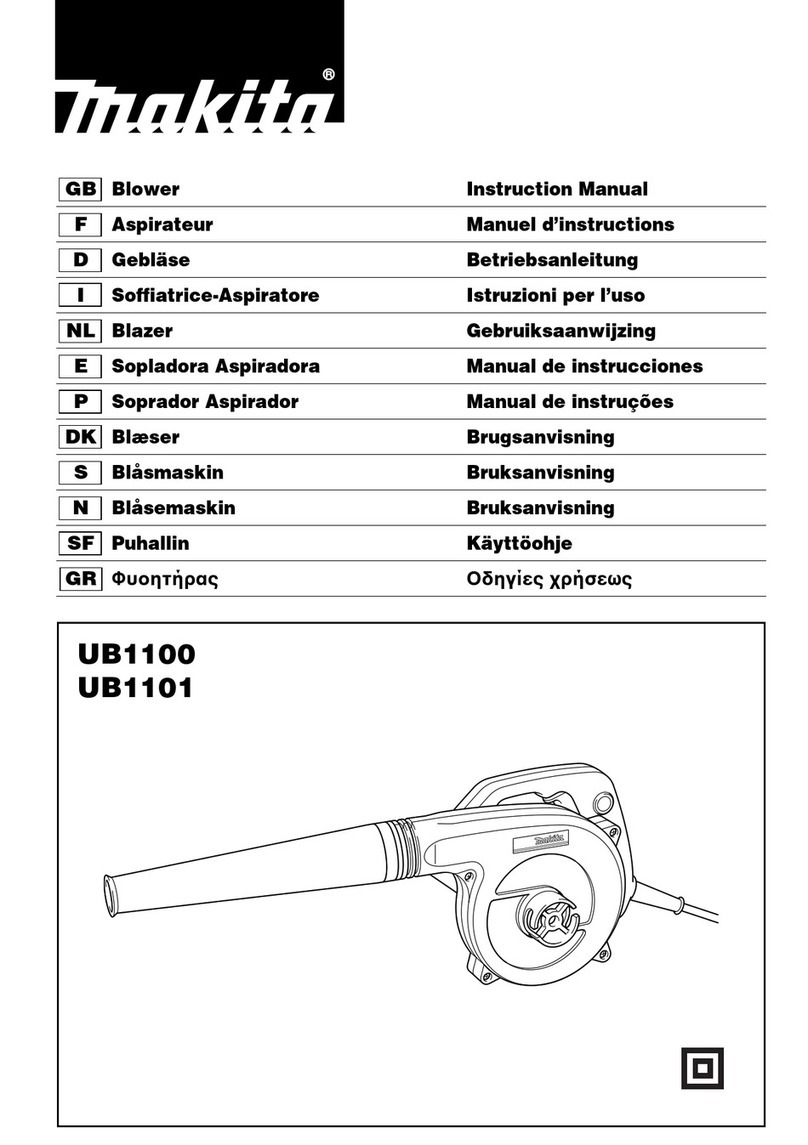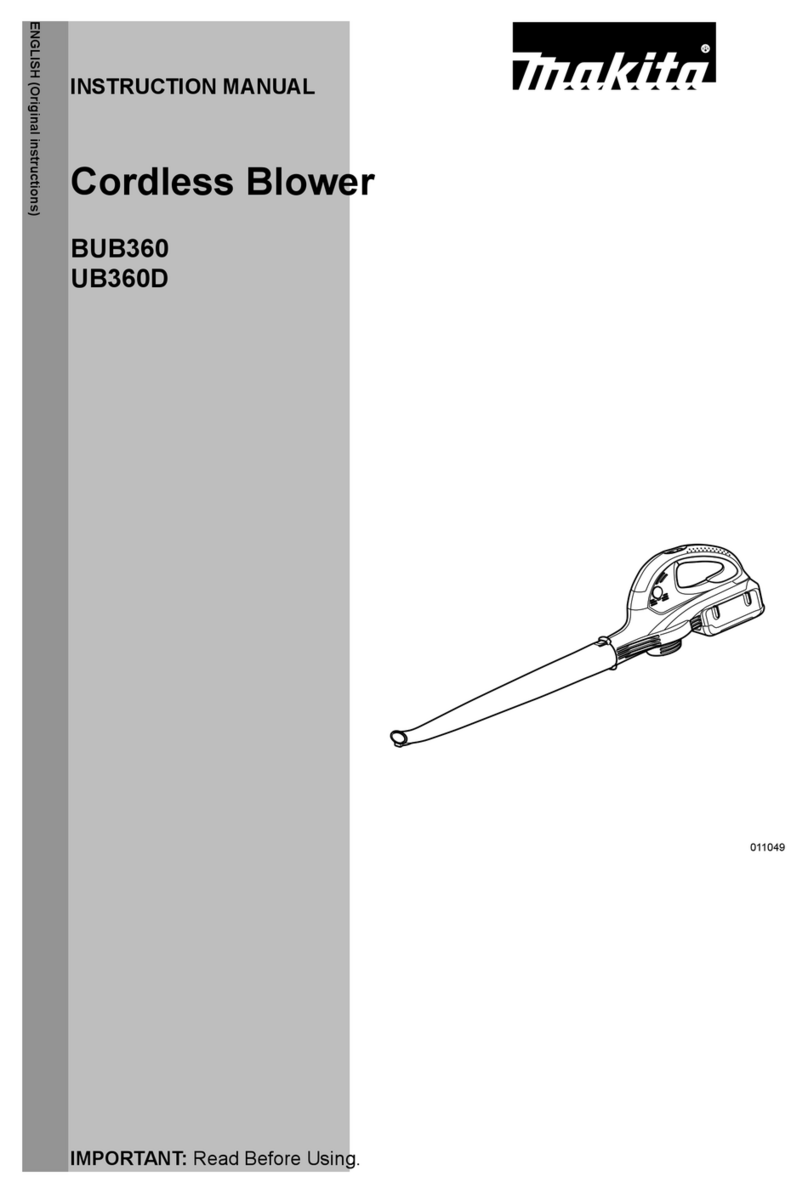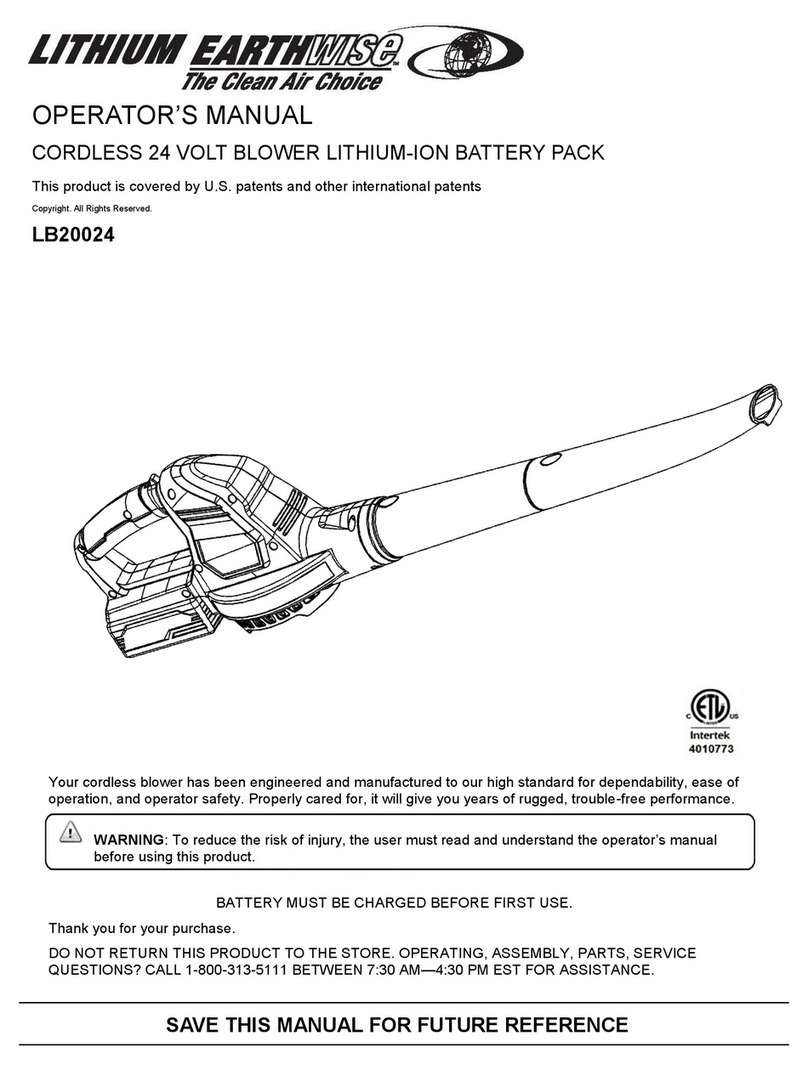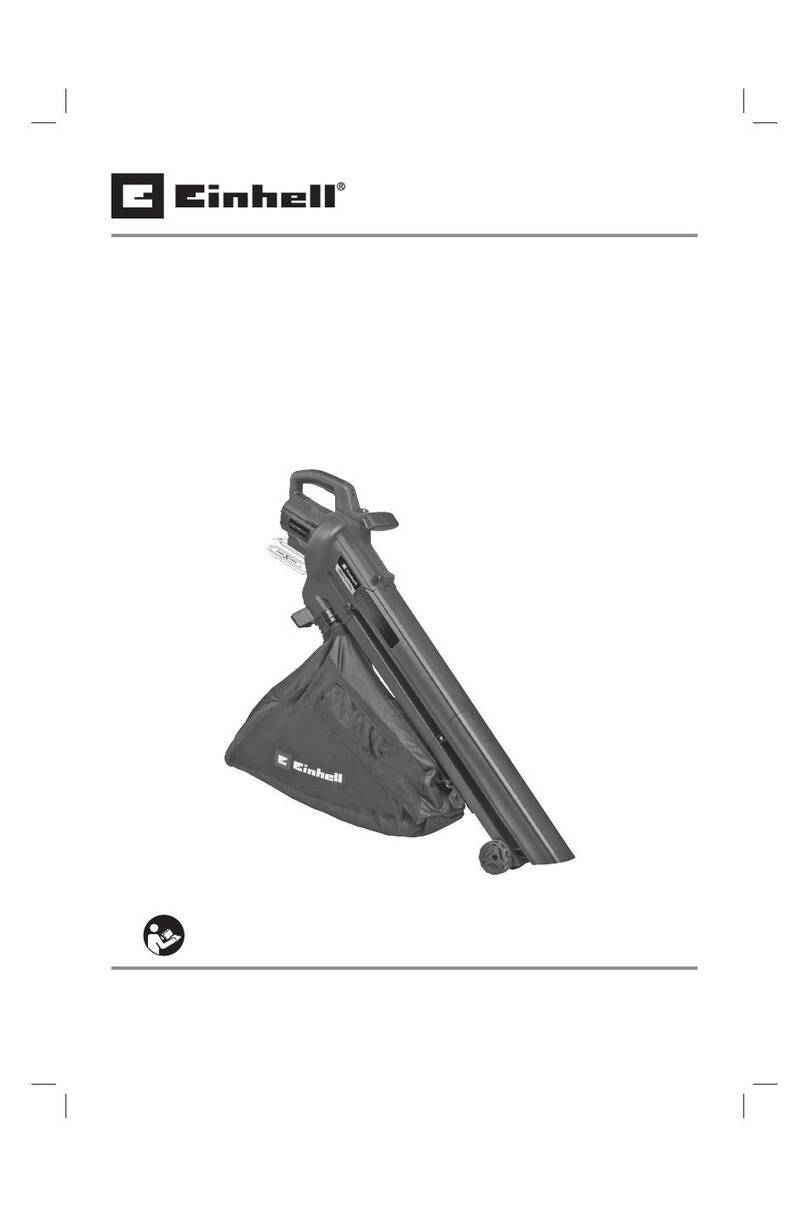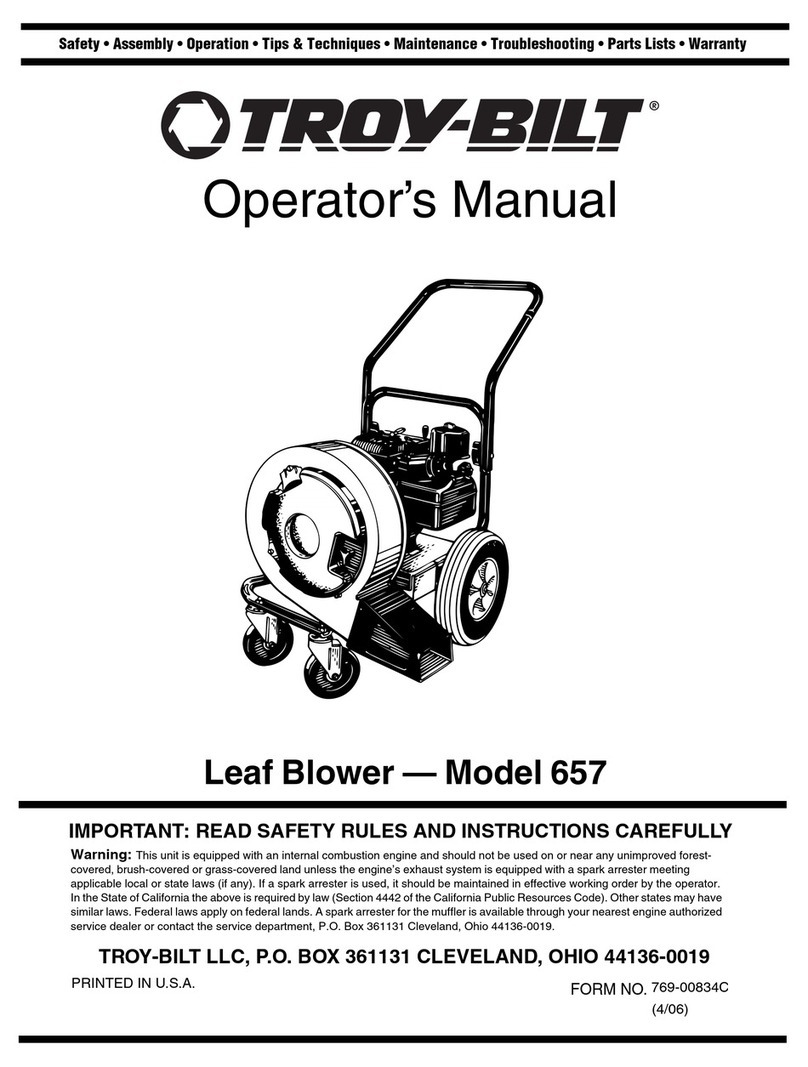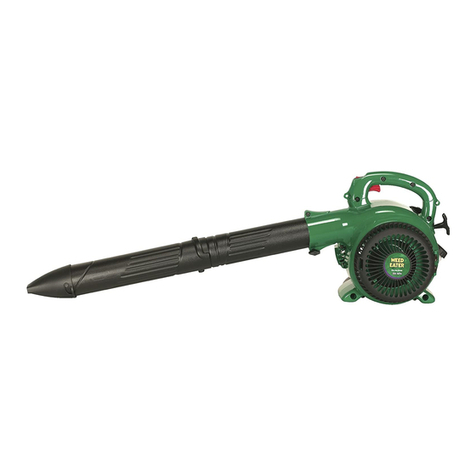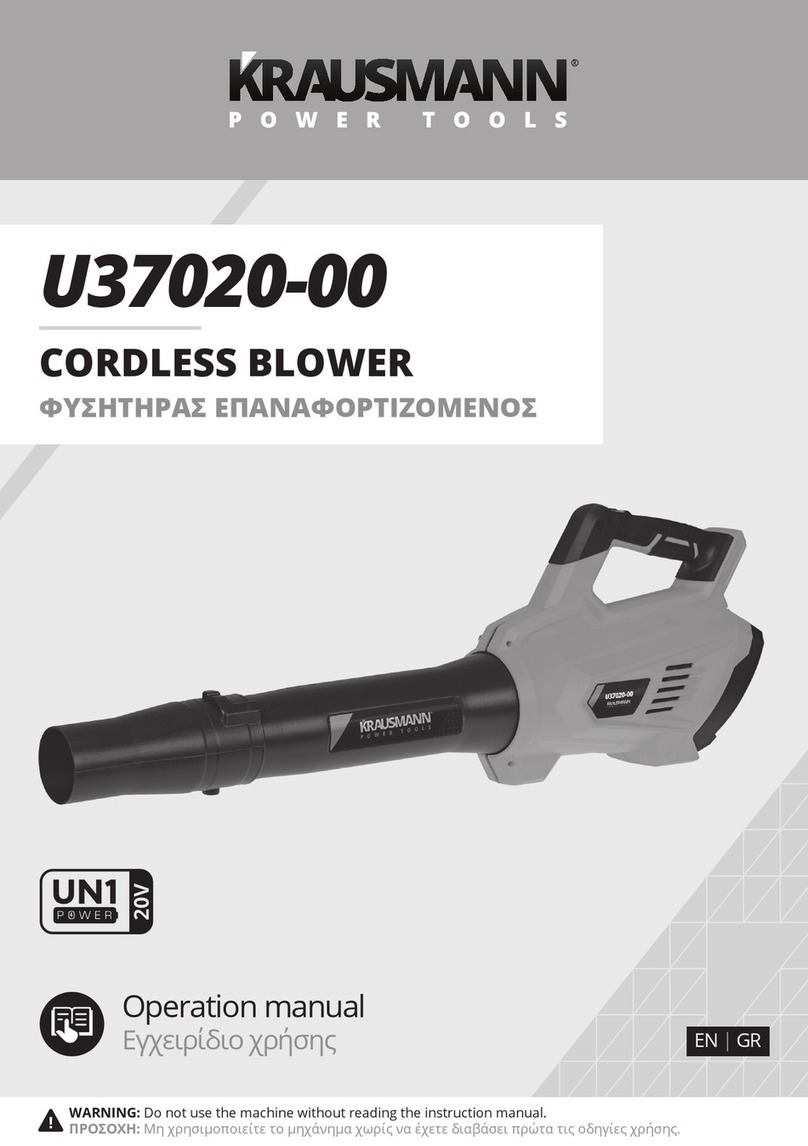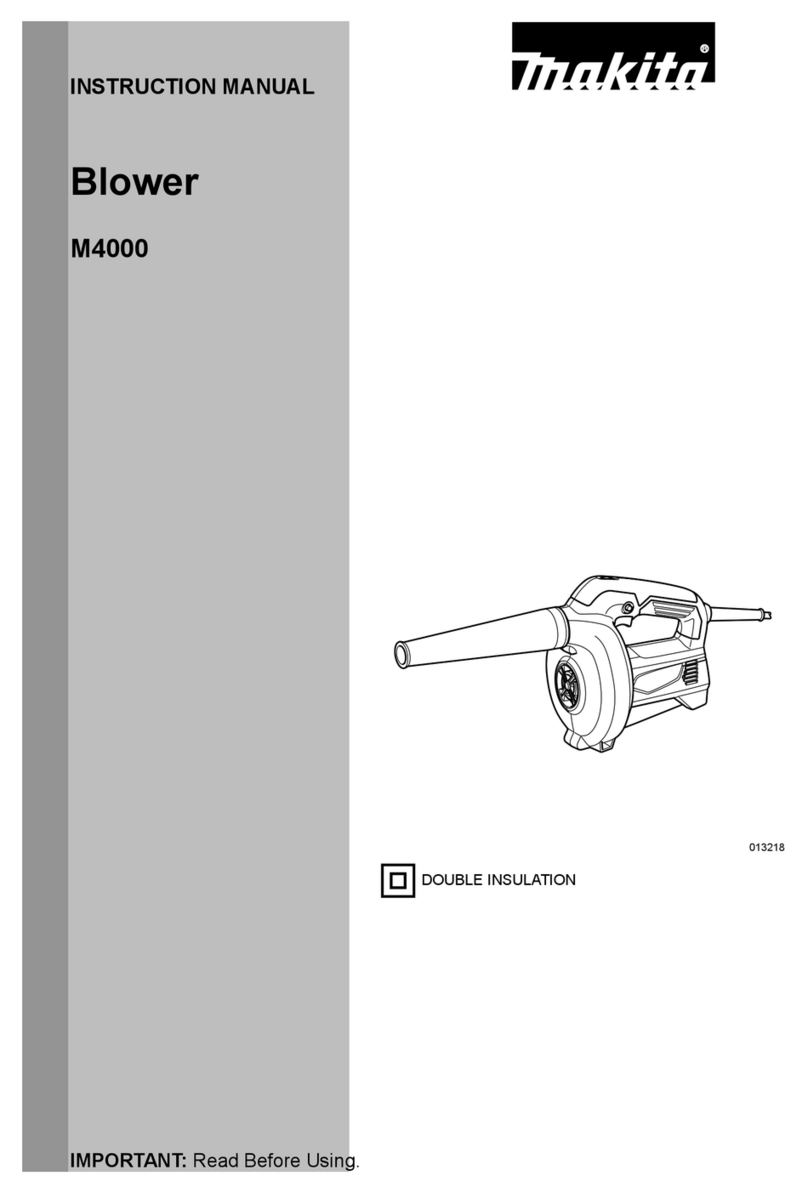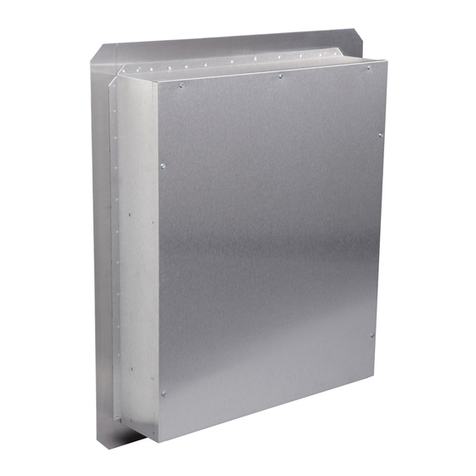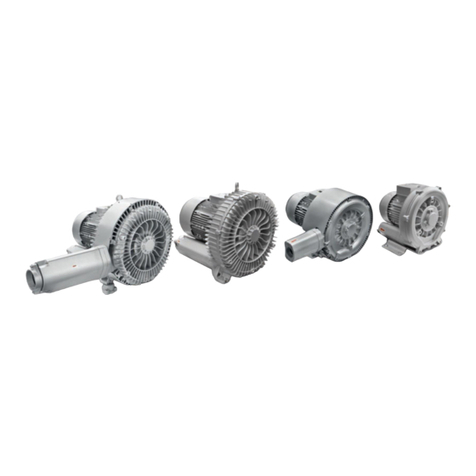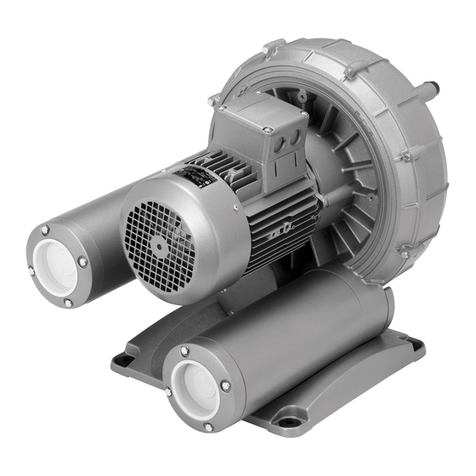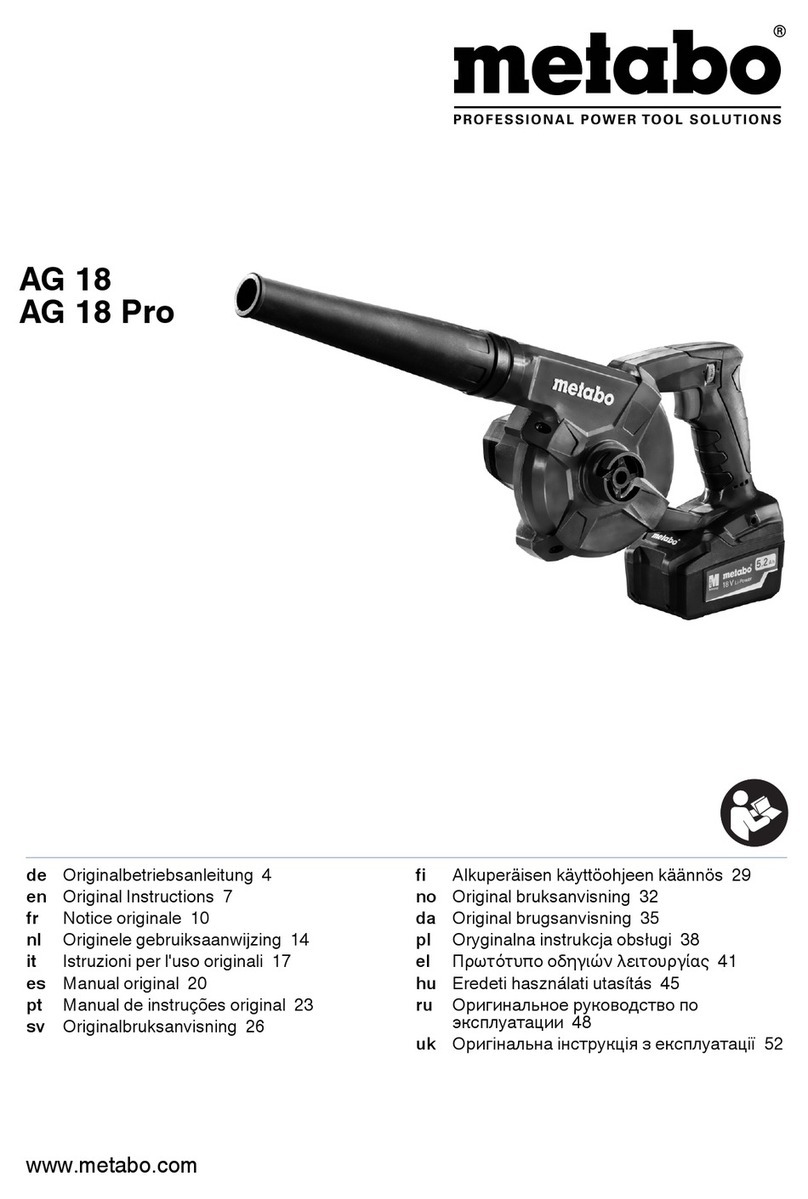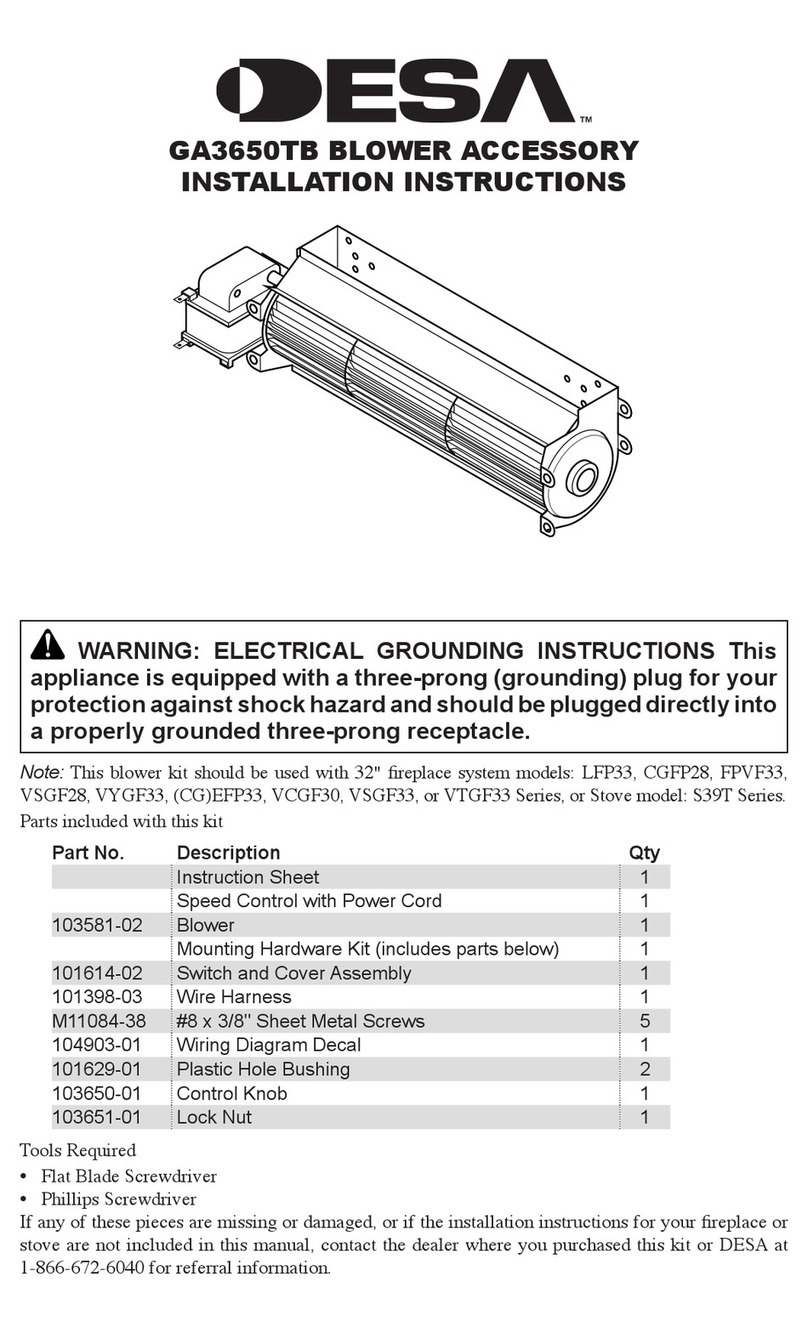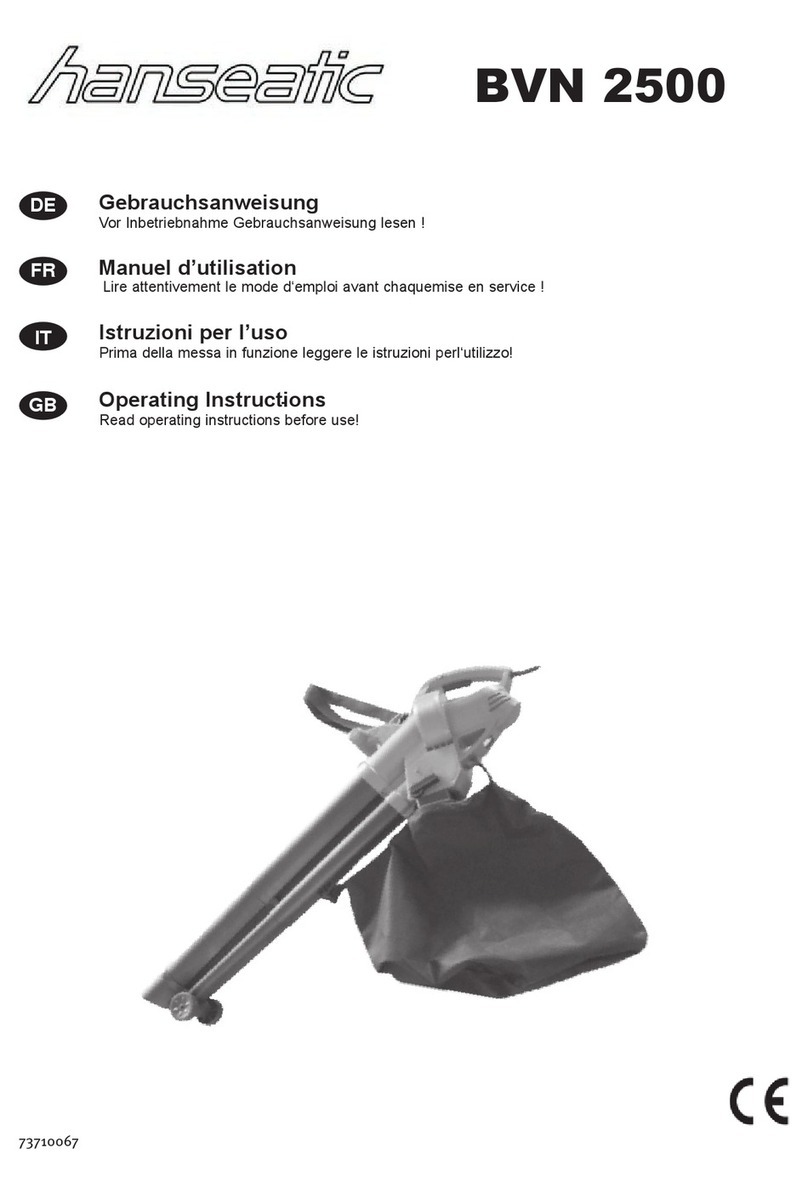
9ENGLISH
Operation
1. Switch off the machine and remove the battery
cartridge and make sure that all moving parts
have come to a complete stop
• whenever you leave the machine.
• before clearing blockages.
• before checking, cleaning or working on
the machine.
• if the machine starts to vibrate
abnormally.
• whenever you convert the machine from
blower to vacuum, and vice versa.
2. Operate the machine only in daylight or in
good articial light.
3. Do not overreach and keep proper balance and
footing at all times.
4. Always be sure of your footing on slopes.
5. Walk, never run.
6. Keep all cooling air inlets clear of debris.
7. Never blow debris in the direction of
bystanders.
8. Operate the machine in a recommended posi-
tion and on a rm surface.
9. Do not operate the machine at high places.
10. Never point the nozzle at anyone in the vicinity
when using the machine.
11. Never block suction inlet and/or blower outlet.
• Be careful not to block suction inlet or
blower outlet with dust or dirt when oper-
ating in dusty area.
• Do not use nozzles other than the nozzles
provided by Makita.
• Do not use the blower to inate balls,
rubber boat or the similar.
12.
Do not operate the machine near open window, etc.
13. Operating the machine only at reasonable
hours is recommended - not early in the
morning or late at night when people might be
disturbed.
14. Using rakes and brooms to loosen debris
before blowing is recommended.
15. If the machine strikes any foreign objects or
should start making any unusual noise or
vibration, immediately switch off the machine
to stop it. Remove the battery cartridge from
the machine and inspect the machine for
damage before restarting and operating the
machine. If the machine is damaged, ask
Makita Authorized Service Centers for repair.
16. Do not insert ngers or other objects into
suction inlet or blower outlet.
17. Prevent unintentional starting. Ensure the
switch is in the off-position before inserting
battery cartridge, picking up or carrying the
machine. Carrying the machine with your n-
ger on the switch or energizing the machine
that has the switch on invites accidents.
18. Never blow or vacuum dangerous materials,
such as nails, fragments of glass, or blades.
19.
Do not operate the machine near ammable materials.
20. Avoid operating the machine for a long time in
low temperature environment.
Maintenance and storage
1. Keep all nuts, bolts and screws tight to be sure
the machine is in safe working condition.
2. If the parts are worn or damaged, replace them
with parts provided by Makita.
3. Store the machine in a dry place out of the
reach of children.
4.
When you stop the machine for inspection, ser-
vicing, storage, or changing accessory, switch
off the machine and make sure that all moving
parts come to a complete stop, and remove the
battery cartridge. Cool down the machine before
making any work on the machine. Maintain the
machine with care and keep it clean.
5. Always cool down the machine before storing.
6. Do not expose the machine to rain. Store the
machine indoors.
7.
When you lift the machine, be sure to bend your
knees and be careful not to hurt your back.
Battery tool use and care
1. Recharge only with the charger specied by
the manufacturer. A charger that is suitable for
one type of battery pack may create a risk of re
when used with another battery pack.
2. Use power tools only with specically desig-
nated battery packs. Use of any other battery
packs may create a risk of injury and re.
3. When battery pack is not in use, keep it away
from other metal objects, like paper clips,
coins, keys, nails, screws or other small metal
objects, that can make a connection from one
terminal to another. Shorting the battery termi-
nals together may cause burns or a re.
4. Under abusive conditions, liquid may be
ejected from the battery; avoid contact. If con-
tact accidentally occurs, ush with water. If
liquid contacts eyes, additionally seek medical
help. Liquid ejected from the battery may cause
irritation or burns.
5. Do not use a battery pack or tool that is dam-
aged or modied. Damaged or modied batteries
may exhibit unpredictable behaviour resulting in
re, explosion or risk of injury.
6. Do not expose a battery pack or tool to re or
excessive temperature. Exposure to re or tem-
perature above 130 °C may cause explosion.
7. Follow all charging instructions and do not
charge the battery pack or tool outside the
temperature range specied in the instruc-
tions. Charging improperly or at temperatures
outside the specied range may damage the
battery and increase the risk of re.
Electrical and battery safety
1. Do not dispose of the battery(ies) in a re.
The cell may explode. Check with local codes for
possible special disposal instructions.
2.
Do not open or mutilate the battery(ies). Released
electrolyte is corrosive and may cause damage to
the eyes or skin. It may be toxic if swallowed.
3.
Do not charge battery in rain, or in wet locations.
4. Do not charge the battery outdoors.
5. Do not handle charger, including charger plug,
and charger terminals with wet hands.
